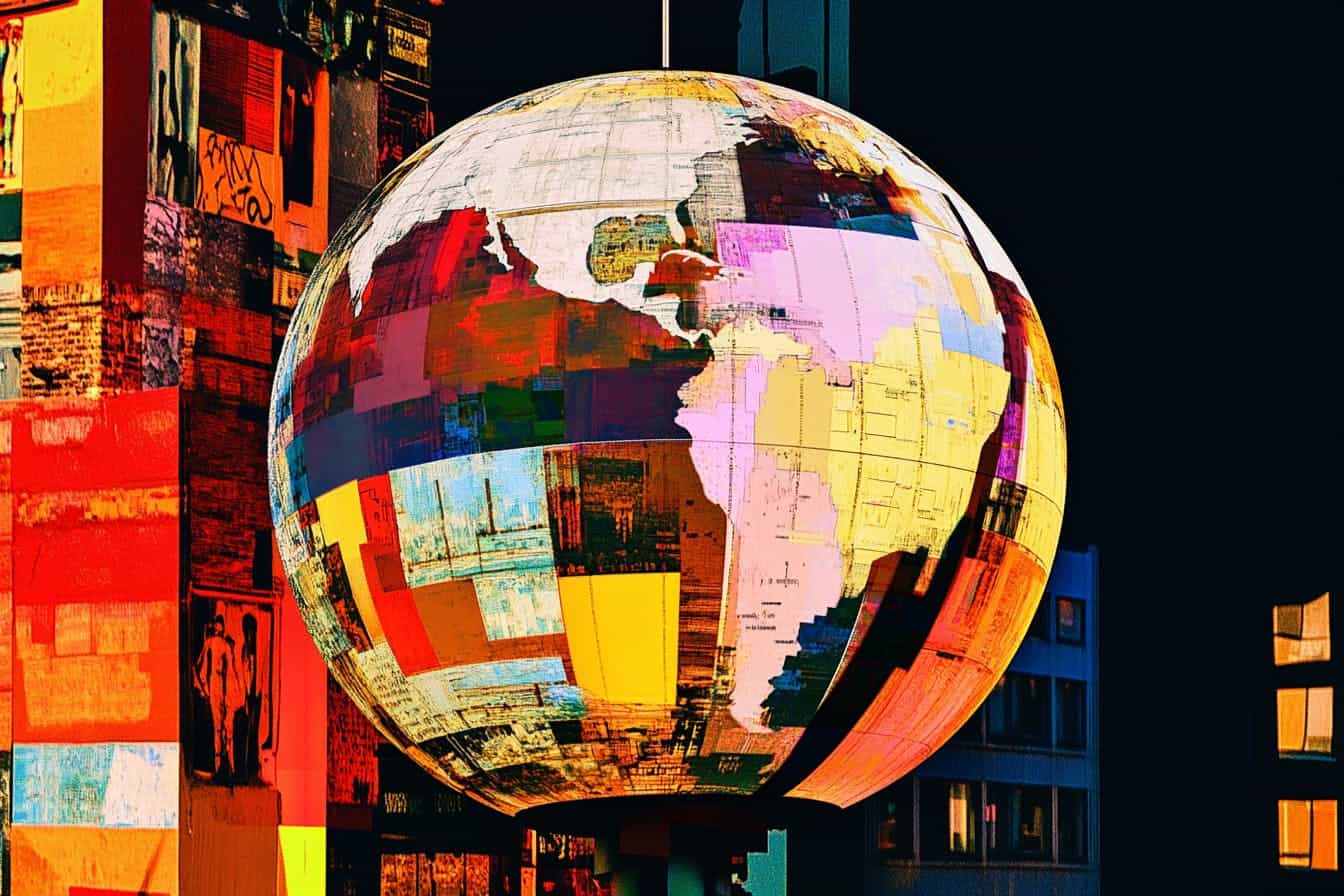Want to nail localization in 2024? Here’s what you need to know:
- Set clear, measurable goals tied to your business strategy
- Use a central localization approach for consistency and cost savings
- Leverage modern tools like AI and machine translation, but don’t rely on them entirely
- Focus on cultural fit, not just word-for-word translation
- Implement strong quality checks with native speakers
- Improve team cooperation through clear roles and communication
- Keep your brand voice consistent across languages
- Optimize for local search engines
- Make localization an ongoing process, not a one-time task
- Track results to measure ROI and improve strategies
Quick comparison of key localization tools:
| Tool | Quality Checks | Translation Tracking | User Satisfaction |
|---|---|---|---|
| Phrase | 8.5/10 | 8.9/10 | High |
| Lokalise | 8.5/10 | 8.9/10 | High |
Why localization matters:
- 65% prefer content in their own language
- 40% won’t buy if not in their language
- Good localization can boost sales by 40-50%
Remember: Localization is about connecting with customers on their terms, wherever they are. Start small, stay flexible, and use tech to your advantage.
Set Clear Localization Goals
Setting clear, measurable goals is key to a successful localization strategy. Without them, you’re just shooting in the dark.
Here’s how to set goals that work:
- Link to business strategy: Your localization goals should support your company’s big picture. Expanding into new markets? Focus on boosting website traffic from those regions.
- Use SMART goals: Make them Specific, Measurable, Attainable, Relevant, and Time-bound. This keeps you focused and accountable.
- Pick the right metrics: Choose what really matters for your business. For example:
| Goal | Metric |
|---|---|
| Boost market share | % increase in local sales |
| Improve user experience | Fewer support tickets |
| Raise brand awareness | More social media followers |
- Set deadlines: Give each goal a timeline to keep things moving.
PayPal‘s globalization team nailed this approach. By tying localization to corporate goals, they’ve earned a spot in C-level strategy talks. That’s how you make localization central to growth.
"Don’t use a one-size-fits-all approach for international expansion. Link your company goals to your localization strategy to make a real impact."
2. Use a Central Localization Approach
A central localization approach can streamline your global efforts. It keeps your brand voice consistent and saves money. Here’s why it works:
- Quality control: One team oversees all translations
- Cost savings: Avoid duplicate work, get bulk discounts
- Faster turnaround: Single system speeds up the process
- Better tracking: Easier to measure localization success
Amway‘s success story proves this point. They switched from departmental translations to a centralized Localization Center:
| Before | After |
|---|---|
| 20 workflows | 8 workflows |
| Scattered translation memories | Unified Translation Memory |
| Inconsistent terminology | 40-language master glossary |
Result? Less confusion, faster training, smoother operations.
To go central:
- Set up a core localization team
- Use one main localization platform
- Create shared language tools
- Partner with a single localization company
Don’t forget: Local input still matters. Your in-country teams know their markets best.
3. Use Modern Localization Tools
AI and machine learning have changed localization. These tools can speed up work and cut costs. But they’re not perfect. Here’s how to use them well:
Machine Translation: Quick But Limited
Google Translate, Microsoft Translator, and DeepL are popular. They’re fast and cheap, but they have issues:
- Don’t get context
- Miss cultural details
- Struggle with creative stuff
For basic content, machine translation can work. It’s WAY cheaper than human translation:
| Translation Type | Cost |
|---|---|
| Machine | $20 per 100,000 words |
| Human | $10,000 per 100,000 words |
But for important stuff? You need humans.
Human + Machine: Best of Both Worlds
Many teams now mix machine and human translation. It’s fast AND accurate. Here’s how:
- Machine translation for the first draft
- Human translators review and edit
- Save approved translations for future use
This cuts time and costs while keeping quality high.
Beyond Just Translating
New tools do more than translate. They can:
- Handle content automatically
- Show project progress
- Assign tasks to team members
Gridly is one example. It shows progress instantly and assigns work based on each text’s status.
Keeping Up with Changes
For fast-moving teams, continuous localization is key. It syncs translation with development. Transifex AI offers:
- Quick, context-aware translations
- Live teamwork between translators and reviewers
- Automatic quality checks
This keeps all language versions current with minimal effort.
Choosing Your Tools
When picking localization tools, think about:
- Your budget
- Languages you need
- How often you update content
- Quality requirements
Remember: The right tools can make localization faster, cheaper, and better. But they’re not magic. You still need skilled people to get the best results.
4. Focus on Cultural Fit
Translating word-for-word isn’t enough for global success. You need to adapt your content to local customs, values, and preferences. Here’s how:
Use Local Expressions
Don’t force idioms from one culture into another. Find local sayings that mean the same thing:
| English Idiom | Local Equivalent | Country |
|---|---|---|
| "It’s raining cats and dogs" | "It’s raining knives" | Greece |
| "Break a leg" | "Toi toi toi" | Germany |
| "Piece of cake" | "Like eating rice" | China |
Mind Your Colors and Symbols
Colors and symbols aren’t universal:
- Yellow? Happy in some places, jealous in others.
- Red? Lucky in Asia, dangerous in the Middle East.
Adapt Your Visuals
Match local norms. In conservative Muslim countries? Use modestly dressed people in your marketing.
Watch Your Words
Even in the same language, words can mean different things:
- "Torta" is a sandwich in Mexico, cake in Colombia, and flatbread in Spain.
- "Biscuit" is a sweet cookie in the UK but a savory bread roll in the US.
Learn from Mistakes
Big brands have messed up by ignoring cultural fit:
HSBC’s "Assume Nothing" became "Do Nothing" in many countries. Cost? A $10 million rebrand.
Mercedes-Benz entered China as "Bensi" (Rush to Your Death). They changed it to "Ben Chi" (Dashing Speed).
Get Local Help
Work with native speakers and cultural experts. They’ll spot things you miss. Language Intelligence only uses in-country, native speakers for translations.
Test Before Launch
Before going live, test your localized content with local focus groups. It’s your last chance to catch any cultural mismatches.
5. Set Up Strong Quality Checks
Quality checks are crucial for localization success. Here’s how to build a solid QA process:
Create a Multi-Step Review Process
1. Translation: Pro translators do the initial work.
2. Editing: A second linguist refines the translation.
3. Proofreading: A third expert catches remaining errors.
4. In-Country Review (ICR): Native speakers familiar with your brand give final approval.
Use Native Speakers
Native speakers catch things non-natives miss:
- Local slang and idioms
- Cultural sensitivities
- Brand voice in the target language
Develop Clear Guidelines
Create these to keep content consistent:
- Style guides
- Term glossaries
- QA checklists
Focus on High-Priority Content
Not all content needs the same scrutiny. Prioritize:
- Legal documents
- Marketing materials
- User interfaces
Set Measurable Goals
Track these to gauge localization quality:
| Metric | Description |
|---|---|
| Error rate | Errors per 1,000 words |
| Customer feedback | User ratings and comments |
| Engagement | Time on localized vs. original pages |
Use Technology Wisely
Localization tools can help, but don’t rely on them 100%. Use them to:
- Automate repetitive tasks
- Flag potential issues
- Manage workflow
Continuous Improvement
Localization isn’t a one-and-done task. Keep improving by:
- Getting user feedback
- Updating style guides
- Retraining your team on new best practices
Learn from Others
Big companies have made costly mistakes. For example:
HSBC had to rebrand after their slogan "Assume Nothing" was mistranslated as "Do Nothing" in many countries. This blunder cost them $10 million.
To avoid such errors, involve your localization team early in content creation.
sbb-itb-43d9647
6. Improve Team Cooperation
Team cooperation can make or break your localization efforts. Here’s how to boost it:
Use a Central Platform
A translation management system (TMS) is your team’s best friend. It’s like a digital workspace where:
- Developers upload content
- Translators do their magic
- Managers keep an eye on everything
Take Crowdin, for example. It plays nice with over 600 apps, making your team’s workflow smoother than butter.
Define Clear Roles
Everyone needs to know their job. It’s that simple:
| Role | What They Do |
|---|---|
| Project Manager | Sets deadlines, keeps things moving |
| Developers | Get content ready for translation |
| Translators | Turn words into different languages |
| Marketers | Add cultural flavor |
Talk It Out
Good communication is the glue that holds everything together:
- Use Slack for quick chats
- Jump on video calls to hash things out
- Build a knowledge base for common questions
Jeremy Watson, a Product Manager, puts it this way:
"Crowdin made our translation process a breeze with GitLab integration. It automatically shows new strings to our community, saving time and getting people involved fast."
Bridge Time Zones
Got a global team? No problem:
- Use tools that don’t need real-time responses
- Record important meetings for the sleepyheads
- Set some hours when everyone’s awake and working
Foster Cultural Understanding
Build a stronger team by:
- Hosting virtual culture parties
- Encouraging folks to learn each other’s languages
- Creating a cheat sheet for cultural terms
Let Robots Help
Use tech to do the boring stuff:
- Set up auto-updates for new content
- Let AI take a first crack at translations
- Use QA checks to catch silly mistakes
7. Keep Brand Voice Consistent
Want your brand to sound the same everywhere? Here’s how to keep your voice steady across languages and cultures:
Create a Localization Style Guide
This guide is your brand’s best friend. It helps translators nail your personality in any language. Include:
- Brand values and personality
- Tone of voice (formal, casual, etc.)
- Go-to terms and phrases
- Cultural dos and don’ts
The OECD‘s guide is a great example. It covers everything from structure to fonts, keeping their content consistent.
Train Your Team
Don’t just hand out the guide. Show your team how to use it:
- Run workshops on your brand voice
- Show real examples of what works (and doesn’t)
- Test understanding with a quiz
Use Translation Memory Tools
These tools remember your past translations. They keep your voice consistent and save time. For example:
| Original Phrase | Approved Translation |
|---|---|
| "Game-changing product" | [Localized equivalent] |
| "Customer-first approach" | [Localized equivalent] |
| "Innovative solutions" | [Localized equivalent] |
Adapt, Don’t Just Translate
Sometimes, word-for-word translation falls flat. That’s where transcreation comes in. It’s about capturing the feel, not just the words.
Coca-Cola nails this. They keep their core identity but tweak campaigns for local tastes. In India, they use cricket stars. In Japan, they create unique flavors like Coca-Cola Peach.
Get Local Input
Your local teams know their markets best. Use them:
- Have them check translations
- Ask how the brand voice lands locally
- Let them suggest tweaks that keep your core message
Regular Brand Audits
Keep your brand voice in check:
- Review localized content quarterly
- Compare it to your original guidelines
- Update your style guide as needed
8. Boost Your Local Search Game
Want to show up in more local searches? Here’s how to tweak your content for different regions:
Regional Lingo Matters
Even in the same language, words change:
| US | UK |
|---|---|
| Sneakers | Trainers |
| Pants | Trousers |
These differences can make or break your local rankings.
Dig Into Local Keywords
Use Semrush to find popular terms in your target markets. Filter by location and language.
Example: A US fashion brand expanding to the UK might target "uk clothing brands" instead of "US clothing stores".
Go Beyond Translation
Don’t just translate your main content. Optimize:
- Image alt tags
- Meta descriptions
- URL structures
Get Geotargeting Right
Set up country-specific URLs and use "hreflang" tags. This helps search engines show the right content to the right people.
Know Your Search Engines
Different engines, different rules:
| Engine | What They Like |
|---|---|
| Baidu (China) | Backlinks from Chinese sites |
| Yandex (Russia) | User behavior (e.g., bounce rate) |
| High-quality backlinks from anywhere |
Adjust your strategy accordingly.
Build Local Links
Team up with local partners, write for local blogs, or sponsor local events. It’ll boost your site’s authority in specific areas.
Keep an Eye on Things
Track your rankings and traffic from different regions. Use Google Analytics to see where your visitors come from and tweak your approach.
"I’m Brazilian so I’ll probably Google something in Portuguese before I search something in English, and a lot of people don’t speak English." – Allan Formigoni, WeTravel
This quote shows why local SEO matters. Tailor your strategy to each market, and you’ll connect better with local audiences and climb those search rankings.
9. Make Localization Ongoing
Localization isn’t a one-time deal anymore. In 2024, it’s all about keeping your global content fresh and up-to-date.
Why does this matter? Simple:
- Markets change fast
- Users give constant feedback
- Products update frequently
If you’re not keeping up, you’re falling behind. So, how do you make localization a constant process?
Here’s what you need to do:
1. Merge localization and product teams
Get your developers and localizers working together. It’s that simple.
2. Use a continuous localization platform (CLP)
CLPs automate a lot of the work. They’re key for real-time updates.
3. Set up automated workflows
Link localization to your CI/CD pipeline. New content gets translated and deployed automatically.
4. Schedule regular check-ins
Don’t forget the human touch. Review things weekly or bi-weekly to catch any issues.
Let’s look at a real example:
The Bradery, a French e-commerce brand, launches 500+ new products daily. That’s a lot to localize. They switched to Weglot for continuous localization, and here’s what happened:
| Before | After |
|---|---|
| Hours of translation daily | 10 minutes twice a week |
| Manual product updates | Automated English and Spanish translations |
| Lag between launch and localization | Real-time localization |
Augustin Prot, Weglot’s CEO, says:
"Effective translation is a must-have to reach a global audience. Weglot helps businesses speak their customers’ language, building trust and driving growth globally."
The Bradery kept up with their rapid launches without sacrificing quality or speed. That’s the power of ongoing localization.
10. Track Localization Results
Want to know if your localization efforts are working? You need to track the right stuff. Here’s how:
Key Metrics to Watch
1. Website Performance
Look at traffic from target locales, how long local visitors stick around, and bounce rates on your localized pages.
2. Business Growth
Count new customers in target markets, revenue from localized pages, and how well you’re keeping customers in new areas.
3. Online Presence
Check click-through rates on local content, SEO rankings in target markets, and local social media engagement.
4. Customer Satisfaction
Keep an eye on reviews, Net Promoter Score (NPS), and support tickets per language.
Tools for Tracking
Localization software makes life easier. Here’s a quick look at two popular tools:
| Tool | Quality Checks | Translation Tracking | User Satisfaction |
|---|---|---|---|
| Phrase | 8.5/10 | 8.9/10 | High |
| Lokalise | 8.5/10 | 8.9/10 | High |
These tools help manage translations and track progress, so you can see what’s working.
Calculating ROI
Here’s a simple formula:
ROI = (Revenue from localization - Cost of localization) / Cost of localization * 100
Real-world example: HubSpot spent $1,500 on localizing one piece of content. The result? $144,000 in yearly recurring revenue. That’s a BIG win.
Tips for Success
Set clear goals, use analytics tools, get feedback from local users, and keep tweaking your strategy.
Conclusion
Localization isn’t just nice to have – it’s a must for global business success in 2024. Here’s why it matters:
1. Market Reach
87% of non-English speakers won’t buy from English-only sites. Localization opens doors to these potential customers.
2. Customer Trust
Speaking your customers’ language (literally and culturally) builds trust. Trust leads to loyalty and sales.
3. Competitive Edge
In a crowded global market, localization sets you apart. It shows customers you care about their specific needs.
4. ROI
The numbers don’t lie. HubSpot turned a $1,500 localization investment into $144,000 in yearly recurring revenue.
As you dive into localization:
- Start small. Focus on key markets first, then expand.
- Stay flexible. What works in one market might flop in another.
- Use tech. Tools like Phrase and Lokalise can make localization easier and more efficient.
Remember: Localization isn’t just about translation. It’s about connecting with customers on their terms, wherever they are.
FAQs
How to improve localization strategy?
Want to boost your localization strategy? Here’s what you need to focus on:
1. Market research
Dig into your target audience’s likes, behaviors, and cultural quirks. Take Airbnb’s China expansion in 2017. They did their homework on local travel habits before launching "Aibiying".
2. Local expertise
Get native speakers and culture experts on board. Coca-Cola’s China success? They use local marketing teams who get regional tastes and traditions.
3. Smart translation
Don’t just translate word-for-word. Netflix puts big bucks into top-notch subtitles and dubbing. Result? In 2022, they saw 30% more non-English viewing.
4. Media makeover
Tweak all visual and audio content. McDonald’s customizes menu pics and promo videos for each market. It pays off with higher engagement.
5. Multilingual SEO
Make your website shine on local search engines. Expedia zeroed in on Japanese SEO tactics and boom – 50% more organic traffic in just six months.






